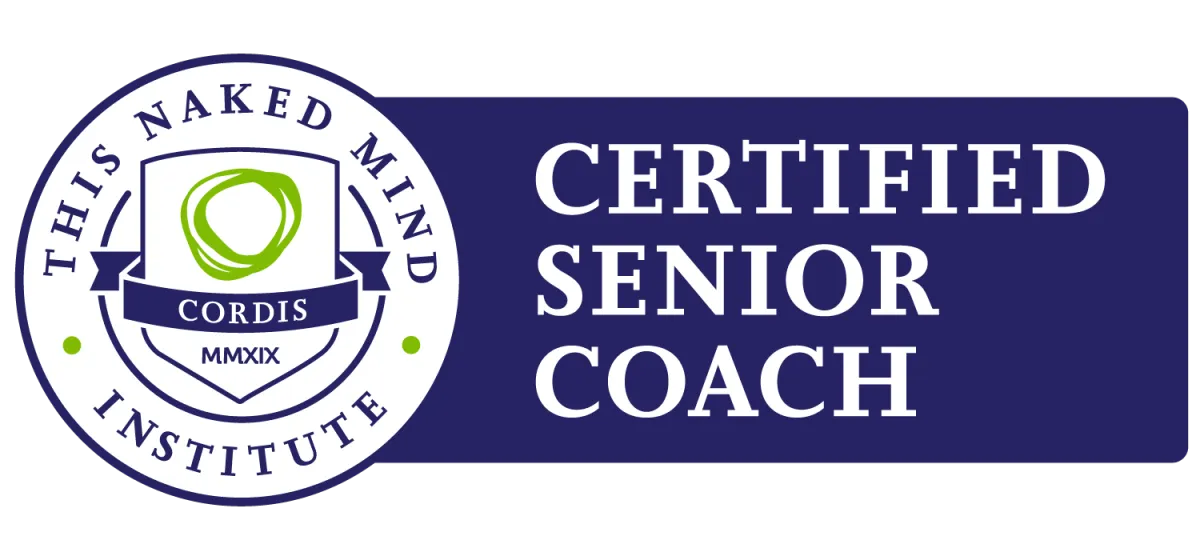
Why Discomfort is the Doorway to Growth (and How to Step Through It)
Most of us were taught—either directly or by example—that discomfort is something to avoid. We were praised for staying “in control,” for keeping things pleasant, for not rocking the boat. And so, when uncomfortable emotions arise—fear, anxiety, shame, grief—our instinct is to push them away. Numb them. Drown them in wine, dope, or scrolling, or to drown ourselves in work.
But here’s the paradox: the very discomfort we avoid is often the clearest signal that we’re on the verge of something meaningful.
In my own journey—and in the work I do with clients—I’ve come to see discomfort not as a problem, but as a portal. A doorway to something deeper. And when we learn to stay with it, to gently and bravely walk through that doorway, something powerful shifts. And there’s science to prove it.
Discomfort Is a Signal, Not a Stop Sign
From a neuroscience standpoint, discomfort activates the amygdala, the part of our brain responsible for detecting threats. It’s designed to activate “fight or flight” to keep us alive—but not necessarily to help us grow. That’s the job of the prefrontal cortex, the part of the brain responsible for reflection, planning, and decision-making.
The trick is learning to engage the prefrontal cortex even while the amygdala is sounding the alarm. That might look like noticing, “I feel anxious,” and pausing instead of reacting. Or staying present during a tough conversation rather than numbing out afterward.
This pause—this moment of awareness—is the birthplace of growth.
As Dr. Lisa Feldman Barrett writes in her research on emotion construction, “Emotions are predictions, not reactions,” and our brain anticipates and interprets incoming sensory information based on past experience and contextual knowledge—not just passive reaction to stimuli.
In other words, discomfort isn’t just happening to you—it’s a patterned response your brain has learned. But, the good news is that means it can also be unlearned. The key, though, is to slow down long enough to notice and change your response.
Growth Requires Disruption

There’s a reason the gym metaphor shows up so often in personal development: physical growth literally hurts. Muscles only grow when they are broken down through micro-tears and rebuilt through recovery.
The discomfort of emotional growth is no different.
Brené Brown refers to this as the “rumble”—the uncomfortable middle space between knowing something needs to change and having any idea how to change it. It’s the uncertainty of early sobriety, the messiness of setting new boundaries, the rawness of saying “no” when you’ve been a lifelong people-pleaser.
It can feel clumsy, awkward, even a little lonely. You may not have the words yet. You may second-guess yourself. And sometimes, the people around you won’t understand what you’re doing—or why you’re doing it.
You might long for the comfort of your old familiar patterns, even when you know they no longer serve you.
But this isn’t failure. This is transformation in progress. This is the sacred, shaky middle—where courage is forged, and a new version of you begins to take shape.
Learning to Sit with Discomfort builds Emotional Agility

Psychologist Susan David coined the term emotional agility in her book by the same title to describe the ability to be with our thoughts and feelings in a way that is curious, courageous, and compassionate.
This doesn’t mean wallowing or indulging in every emotion that arises. It means noticing what’s there, allowing it to exist, and making conscious choices about how to respond.
People who develop emotional agility tend to have better mental health, stronger relationships, and more resilience in the face of stress. And one of the foundational skills? Learning to tolerate discomfort without reacting impulsively.
5 Ways to Step Through the Doorway of Discomfort
If discomfort is a doorway, these five practices are the key to stepping through:
1. Name the feeling.
Labeling emotions like “shame,” “fear,” or “guilt” activates the language centers in the brain and calms the limbic system. When you name what you’re feeling, you create space between you and the emotion—it becomes something you have, not something you are. Over time, noticing and naming your emotions helps you recognize recurring patterns and respond more skillfully when they arise.
2. Use your breath as a bridge.
A long, slow exhale activates the parasympathetic nervous system, signaling safety to the body. Try 4-7-8 breathing or simply exhaling twice as long as you inhale. Even 60 seconds of intentional breathing can reset your nervous system and help you stay present through difficult moments. Your breath is always with you—it’s the most accessible and reliable anchor you have when things feel unsteady.
3. Practice micro-stays.
Instead of forcing yourself to sit in discomfort indefinitely, try staying for just one breath longer than usual. Then build from there. This gentle exposure helps retrain your brain to see discomfort as survivable—and eventually, as something you can navigate with confidence. As these small moments add up, you’ll discover you can lean into longer stretches of discomfort without panic or the urge to escape.
4. Get curious, not critical.
Ask: What is this emotion trying to teach me? What value might be hidden inside this pain? Curiosity opens the door to self-compassion and insight, while criticism shuts it down and keeps you stuck in old patterns. The more you practice curiosity, the easier it becomes to meet your discomfort with gentleness rather than judgment.
5. Celebrate your capacity.
Every time you stay with discomfort instead of fleeing it, you're rewiring your brain. Neuroplasticity means that with practice, discomfort becomes easier to hold. Honor these small moments of bravery—they're evidence that change is happening, even if it’s invisible at first. Each recognition of your courage builds momentum, reminding you that you truly are capable of handling whatever comes your way
Final Thoughts: On the Other Side of Discomfort
What’s waiting on the other side of discomfort?
Clarity. Confidence. Healing. Sometimes even joy.
When you stop seeing discomfort as a danger and start seeing it as a guide, everything changes. You no longer have to fear the wobble. You can learn to stand in it. To move through it. To find your footing on the other side.
This is the work we do in AFreeLife Coaching—whether you’re exploring your relationship with alcohol, other substances, navigating a big life change, or just trying to reconnect with yourself.
Because growth doesn’t come from staying safe. It comes from being brave enough to feel.
And the good news? You don’t have to do it alone.
💛 Ready to explore how to sit with discomfort in a way that leads to healing—not more struggle?
Please subscribe to Insights, our weekly newsletter for updates about events and more tools and tips for finding AFreeLife!



Joy Stieglitz is a certified Wellness Coach who specializes in helping sandwich generation people change their relationship with alcohol and/or other unwanted habits to find true freedom and joy in their life. Alcohol Free since November 2019, Joy brings valuable insights into her practice. AFreeLife Coaching is a safe space where all are welcome to explore their desire for health, wellness, and personal growth regardless of where they are or want to go on their journey, and regardless of age, race, gender, sexual orientation, religious affiliation, or any other social construct.
© 2025 - AFreeLife - All Rights Reserved - Terms of Service - Privacy Policy

